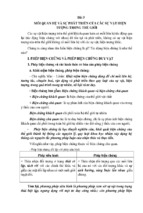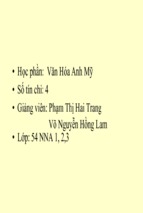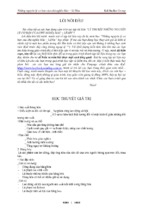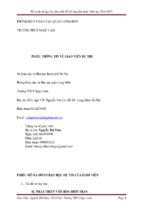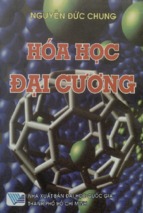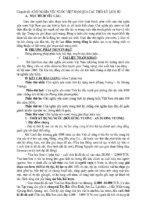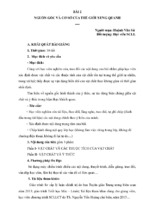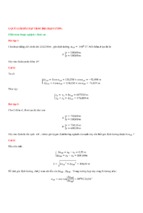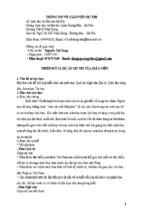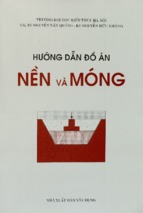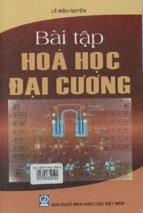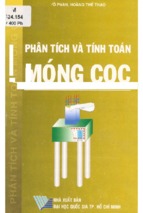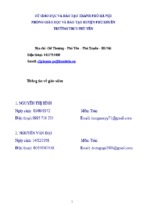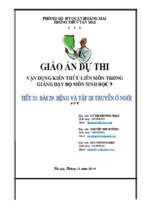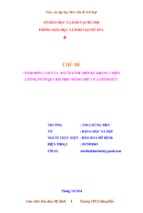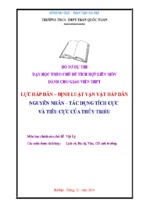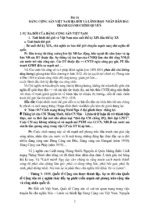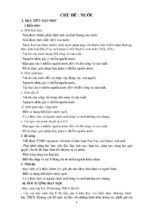Downloaded from ascelibrary.org by RMIT UNIVERSITY LIBRARY on 01/03/19. Copyright ASCE. For personal use only; all rights reserved.
GSP 303
PanAm
Unsaturated Soils
2017
Swell-Shrink and Tropical Soils
Papers from Sessions of the
Second Pan-American Conference
on Unsaturated Soils
Dallas, Texas
November 12–15, 2017
Edited by
Laureano R. Hoyos, Ph.D., P.E.
John S. McCartney, Ph.D., P.E.
Sandra L. Houston, Ph.D., D.GE
William J. Likos, Ph.D.
Downloaded from ascelibrary.org by RMIT UNIVERSITY LIBRARY on 01/03/19. Copyright ASCE. For personal use only; all rights reserved.
GEOTECHNICAL
SPECIAL
PUBLICATION
NO.
303
PANAM UNSATURATED
SOILS 2017
SWELL-SHRINK AND TROPICAL SOILS
SELECTED PAPERS FROM SESSIONS OF THE SECOND
PAN-AMERICAN CONFERENCE ON UNSATURATED SOILS
November 12–15, 2017
Dallas, Texas
SPONSORED BY
International Society of Soil Mechanics and Geotechnical Engineering
The Geo-Institute of the
American Society of Civil Engineers
EDITED BY
Laureano R. Hoyos, Ph.D., P.E.
John S. McCartney, Ph.D., P.E.
Sandra L. Houston, Ph.D., D.GE
William J. Likos, Ph.D.
Published by the American Society of Civil Engineers
Downloaded from ascelibrary.org by RMIT UNIVERSITY LIBRARY on 01/03/19. Copyright ASCE. For personal use only; all rights reserved.
Published by American Society of Civil Engineers
1801 Alexander Bell Drive
Reston, Virginia, 20191-4382
www.asce.org/publications | ascelibrary.org
Any statements expressed in these materials are those of the individual authors and do not
necessarily represent the views of ASCE, which takes no responsibility for any statement
made herein. No reference made in this publication to any specific method, product, process,
or service constitutes or implies an endorsement, recommendation, or warranty thereof by
ASCE. The materials are for general information only and do not represent a standard of
ASCE, nor are they intended as a reference in purchase specifications, contracts, regulations,
statutes, or any other legal document. ASCE makes no representation or warranty of any
kind, whether express or implied, concerning the accuracy, completeness, suitability, or
utility of any information, apparatus, product, or process discussed in this publication, and
assumes no liability therefor. The information contained in these materials should not be used
without first securing competent advice with respect to its suitability for any general or
specific application. Anyone utilizing such information assumes all liability arising from such
use, including but not limited to infringement of any patent or patents.
ASCE and American Society of Civil Engineers—Registered in U.S. Patent and Trademark
Office.
Photocopies and permissions. Permission to photocopy or reproduce material from ASCE
publications can be requested by sending an e-mail to
[email protected] or by locating a
title in ASCE's Civil Engineering Database (http://cedb.asce.org) or ASCE Library
(http://ascelibrary.org) and using the “Permissions” link.
Errata: Errata, if any, can be found at https://doi.org/10.1061/9780784481707
Copyright © 2018 by the American Society of Civil Engineers.
All Rights Reserved.
ISBN 978-0-7844-8170-7 (PDF)
Manufactured in the United States of America.
PanAm Unsaturated Soils 2017 GSP 303
iii
Preface
Downloaded from ascelibrary.org by RMIT UNIVERSITY LIBRARY on 01/03/19. Copyright ASCE. For personal use only; all rights reserved.
The Second Pan-American Conference on Unsaturated Soils (PanAm-UNSAT 2017)
was held in Dallas, Texas, November 12-15, 2017, featuring the latest research
advances and engineering‐practice innovations in the area of Unsaturated
Geotechnics, with a focus on characterization, modeling, design, construction, field
performance and sustainability.
PanAm-UNSAT 2017 follows a now well-established series of regional and
international conferences on Unsaturated Soils, bringing together researchers,
practitioners, students and policy makers from around the world, particularly the
Americas. The conference built upon the success of PanAm-UNSAT 2013 (First PanAmerican Conference on Unsaturated Soils, Cartagena, Colombia), as well as that of
previous conferences on unsaturated soils hosted in the United States, including
UNSAT 2006 (Fourth International Conference on Unsaturated Soils, Carefree,
Arizona) and EXPANSIVE’92 (Seventh International Conference on Expansive
Soils, Dallas, Texas, 1992).
Proceedings of PanAm-UNSAT 2017 have been documented in four Geotechnical
Special Publications (GSP) of ASCE including Volume 1: Plenary Session Papers;
Volume 2: Fundamentals; Volume 3: Applications; and Volume 4: Swell-Shrink and
Tropical Soils.
Current Volume 4 (Swell-Shrink and Tropical Soils) consists of five sections:
Section I, Expansive Soils: Volume Change, includes 12 papers dealing with the
measurement of the volume change of expansive soils during both shrinkage and
swelling. This includes evaluations of different testing approaches, as well as the
characterization of expansive soils under different conditions.
Section II, Expansive Soils: Mitigation and Modeling, includes 14 papers dealing
with different strategies to treat expansive soils, using new and established additives
and methodologies. Further, several papers on the modeling of expansive soils are
included that focus on climate interaction and volume change progression over time.
Section III, Foundations on Expansive Soils, includes 5 papers dealing with
foundations on unsaturated soils, including both shallow footings and deep
foundations. The papers focus on field observations, design approaches, and finite
element simulations to consider the impact of unsaturated conditions on the
deformation and bearing capacity of the foundations.
Section IV, Modeling of Cracked Soils, includes 6 papers dealing with the
observation and theoretical modeling of cracking in unsaturated soils. Two papers
© ASCE
PanAm Unsaturated Soils 2017 GSP 303
focus on the role of fiber reinforcements in resisting cracking, and one focuses on
cracking effects on soil-structure interaction.
Downloaded from ascelibrary.org by RMIT UNIVERSITY LIBRARY on 01/03/19. Copyright ASCE. For personal use only; all rights reserved.
Section V, Tropical Soil Behavior, includes 8 papers dealing with the shear strength,
volume change, dynamic properties, and hydraulic properties of tropical soils. Papers
include innovative testing approaches to consider the behavior of these unique soils.
Papers focus on the chemistry and microstructure encountered in dealing with tropical
soils.
Each paper was subject to rigorous technical review during a three-phase submission
process and received a minimum of two positive peer reviews before final acceptance
by the corresponding session chair(s).
© ASCE
iv
PanAm Unsaturated Soils 2017 GSP 303
Acknowledgments
Downloaded from ascelibrary.org by RMIT UNIVERSITY LIBRARY on 01/03/19. Copyright ASCE. For personal use only; all rights reserved.
The following individuals deserve special acknowledgment and recognition for their
direct involvement and efforts in making this regional conference a success:
PanAm-UNSAT 2017 Program Committee
Conference Chair: Laureano R. Hoyos, Ph.D., P.E., University of Texas at Arlington
Conference Co-Chair: John S. McCartney, Ph.D., P.E., M.ASCE, University of
California, San Diego
Technical Program Chair: Sandra L. Houston, Ph.D., D.GE, M.ASCE, Arizona
State University
Technical Program Co-Chair: William J. Likos, Ph.D., M.ASCE, University of
Wisconsin, Madison
Local Chair: Marcelo J. Sanchez, Ph.D., Aff.M.ASCE, Texas A&M University
Local Co-Chair: Gerald A. Miller, Ph.D., P.E., M.ASCE, University of Oklahoma
Logistics Coordinator: Majid Ghayoomi, Ph.D., A.M.ASCE, University of New
Hampshire
Sponsorships/Exhibits Chair & Liaison from the G-I Technical Coordination
Council (TCC): Anand J. Puppala, Ph.D., P.E., D.GE, F.ASCE, University of Texas
at Arlington
The Geo-Institute (G-I) of the ASCE
Brad Keelor, Director
Helen Cook, Board and Meetings Specialist
Lucy King, Senior Manager, Conferences
Cristina Charron, Manager, Conferences
Drew Caracciolo, Manager, Sponsorships and Exhibits
Rachel Hobbs, Administrator, Conferences
The conference Program Committee would also like to acknowledge the officers of
the TC106 Committee on Unsaturated Soils (ISSMGE), and all members of the
Technical Advisory and International Technical Committees, who provided guidance
and support during the early planning phases of the conference.
TC106 Committee on Unsaturated Soils (ISSMGE)
David Toll, Chair, University of Durham, UK
Bernardo Caicedo, Vice Chair, Universidad de Los Andes, Bogotá, Colombia
Adrian Russell, Secretary, University of New South Wales, Australia
Technical Advisory Committee
Sai Vanapalli, University of Ottawa, Canada
Greg Siemens, Royal Military College, Canada
Kanthasamy (Muralee) Muraleetharan, University of Oklahoma, USA
© ASCE
v
PanAm Unsaturated Soils 2017 GSP 303
Downloaded from ascelibrary.org by RMIT UNIVERSITY LIBRARY on 01/03/19. Copyright ASCE. For personal use only; all rights reserved.
Xiong Zhang, University of Cincinnati, USA
Ning Lu, Colorado School of Mines, USA
Claudia Zapata, Arizona State University, USA
Jorge Zornberg, University of Texas at Austin, USA
Jorge Abraham Diaz-Rodriguez, UNAM, Mexico
Bernardo Caicedo, Universidad de Los Andes, Bogotá, Colombia
Julio E. Colmenares, Universidad Nacional, Bogotá, Colombia
Orencio Villar, University of São Paulo, São Carlos, Brazil
Tacio de Campos, PUC-Rio, Brazil
Fernando Marinho, University of São Paulo, Brazil
Manoel Porfírio Cordão Neto, Universidade de Brasília, Brazil
Diego Manzanal, University of Buenos Aires, Argentina
Alejo Sfriso, University of Buenos Aires, Argentina
International Technical Committee
David Toll, University of Durham, UK
Adrian Russell, University of New South Wales, Australia
Eduardo Alonso, UPC, Barcelona, Spain
Antonio Gens, UPC, Barcelona, Spain
Lyesse Laloui, EFP Lausanne, Switzerland
J. Carlos Santamarina, KAUST, Saudi Arabia
Charles Ng, HKUST, Hong Kong
PanAm-UNSAT 2017 Session Chairs
The conference Program Committee would also like to acknowledge the conference
Session Chairs, who guided authors and reviewers through the draft and final phases
of paper submission and review. In most cases, these chairs also served as on-site
moderators during the conference itself.
01/ Dynamic Behavior of Unsaturated Soils, part I
Majid Ghayoomi, Ph.D., A.M.ASCE, University of New Hampshire
02/ Dynamic Behavior of Unsaturated Soils, part II
Nadarajah Ravichandran, Ph.D., M.ASCE, Clemson University
Laureano R. Hoyos, Ph.D., P.E., M.G-I, University of Texas at Arlington
03/ Expansive Soils and Volume Change, Part I
Rifat Bulut, Ph.D., M.ASCE, Oklahoma State University
04/ Expansive Soils and Volume Change, Part II
Jairo E. Yepes, Ph.D., Universidad Santo Tomás, Bogotá, Colombia
Ujwalkumar D. Patil, Ph.D., P.E., M.ASCE, University of Guam
Liangbo Hu, Ph.D., A.M.ASCE, University of Toledo
© ASCE
vi
PanAm Unsaturated Soils 2017 GSP 303
05/ Expansive Soils and Volume Change, Part III
Iraj Noorany, Ph.D., P.E., G.E., F.ASCE, Noorany Geotechnical
Downloaded from ascelibrary.org by RMIT UNIVERSITY LIBRARY on 01/03/19. Copyright ASCE. For personal use only; all rights reserved.
06/ Pore Fluid Retention Behavior, Part I
William J. Likos, Ph.D., M.ASCE, University of Wisconsin, Madison
Idil Deniz Akin, Ph.D., A.M.ASCE, Washington State University
07/ Pore Fluid Retention Behavior, Part II
Corrie Walton-Macaulay, Ph.D., P.E., M.ASCE, Bucknell University
08/ Hydraulic Behavior, Part I
Leonardo D. Rivera, METER Group
09/ Hydraulic Behavior, Part II
Leonardo D. Rivera, METER Group
10/ Shear Strength Behavior
Ali Khosravi, Ph.D., Aff.M.ASCE, Sharif University of Technology
11/ Innovations in Testing, Part I
Morteza Khorshidi, Ph.D., Aff.M.ASCE, Geosyntec Consultants
Xin Kang, Ph.D., ACI, ASTM, A.M.ASCE, Hunan University
12/ Innovations in Testing, Part II
Morteza Khorshidi, Ph.D., Aff.M.ASCE, Geosyntec Consultants
Xin Kang, Ph.D., ACI, ASTM, A.M.ASCE, Hunan University
13/ Innovations in Testing, Part III
Morteza Khorshidi, Ph.D., Aff.M.ASCE, Geosyntec Consultants
Xin Kang, Ph.D., ACI, ASTM, A.M.ASCE, Hunan University
14/ Field Applications of Unsaturated Soils
Gerald A. Miller, Ph.D., P.E., M.ASCE, University of Oklahoma
15/ Stability of Unsaturated Slopes, Part I
Navid H. Jafari, Ph.D., A.M.ASCE, Louisiana State University
16/ Stability of Unsaturated Slopes, Part II
Soonkie Nam, Ph.D., EIT, A.M.ASCE, Georgia Southern University
17/ Numerical Modeling: Flow and Deformation, Part I
Zhen Liu, Ph.D., P.E., M.ASCE, Michigan Technological University
© ASCE
vii
PanAm Unsaturated Soils 2017 GSP 303
viii
18/ Numerical Modeling: Flow and Deformation, Part II
Xiaoyu Song, Ph.D., A.M.ASCE, University of Florida
Downloaded from ascelibrary.org by RMIT UNIVERSITY LIBRARY on 01/03/19. Copyright ASCE. For personal use only; all rights reserved.
19/ Numerical Modeling: Coupled Processes
Giuseppe Buscarnera, Ph.D., Aff.M.ASCE, Northwestern University
20/ Foundations on Expansive Soils
Xiong Zhang, Ph.D., P.E. A.M.ASCE, Missouri University of Science and
Technology
21/ Expansive Soils: Mitigation
Bhaskar C.S. Chittoori, Ph.D., P.E., M.ASCE, Boise State University
22/ Expansive Soils: Modeling
Xinbao Yu, Ph.D., P.E., M.ASCE, University of Texas-Arlington
23/ Pipeline and Transportation Structures in Unsaturated Soils
Claudia E. Zapata, Ph.D., A.M.ASCE, Arizona State University
Mohammad Sadik Khan, Ph.D., P.E., M.ASCE, Jackson State University
24/ Modeling of Cracked Soils and Effects of Cracking
Marcelo J. Sanchez, Ph.D., Aff.M.ASCE, Texas A&M University
25/ Constitutive Modeling: Micro to Macro
Kalehiwot N. Manahiloh, Ph.D., P.E., M.ASCE, University of Delaware
26/ Climate Effects and Permafrost
Farshid Vahedifard, Ph.D., P.E., M.ASCE, Mississippi State University
27/ Energy Geotechnics, Bio-Geo, and Sustainability
John S. McCartney, Ph.D., P.E., M.ASCE, University of California, San Diego
PanAm-UNSAT 2017 Draft Paper Reviewers
Finally, the Program Committee would also like to acknowledge those who
contributed to the conference by serving as the primary reviewers of draft papers.
Their efforts in providing careful, thorough reviews of each submission form the
backbone of quality assurance, providing organizers the confidence that conference
content would represent the best of current thinking in the field, and allowing these
Proceedings to be published as a multi-volume Geotechnical Special Publication
(GSP).
Murad Abu Farsakh
Raju Acharya
Marshall Addison
© ASCE
Asif Ahmed
Beena Ajmera
Amir Akbari Garakani
Idil Akin
Miguel Alfaro
Saumya Amarasiri
PanAm Unsaturated Soils 2017 GSP 303
Downloaded from ascelibrary.org by RMIT UNIVERSITY LIBRARY on 01/03/19. Copyright ASCE. For personal use only; all rights reserved.
Omar Amer
Ron Andrus
Mohamed Arab
Andrew Assadollahi
Guillermo Avila
Kleio Avrithi
Muwafaq Awad
Ramdane Bahar
Aritra Banerjee
Tugce Baser
Munwar Basha
Bate Bate
Melissa Beauregard
Craig Benson
Riad Beshoy
Tejovikash
Bheemasetti
Katia Bicalho
Mahnoosh Biglari
Hemanta Bista
Amin Borghei
Tommy Bounds
Rifat Bulut
Giuseppe Buscarnera
Jack Cadigan
Donald Cameron
Gaylon Campbell
Junnan Cao
Amy Cerato
Uma Chaduvula
Lizhou Chen
Can Chen
Bhaskar Chittoori
Mehmet Cil
Rodney Collins
Jose Andres Cruz
Sheng Dai
Arghya Das
Abhijit Deka
Ludmilla Derk
Yi Dong
Ghada Ellithy
David Elwood
Matt Evans
© ASCE
ix
Arvin Farid
Ashok Gaire
Fernando Garcia
Lucas Garino
Kevin Gaspard
Antonio Gens
Hande Gerkus
Omid Ghasemi-Fare
Saswati Ghatak
Majid Ghayoomi
Amin Gheibi
Michael Gomez
James Graham
Xiangfeng Guo
Marte Gutierrez
Jumanah Hajjat
MD Haque
Arash Hassanikhah
Kianoosh Hatami
Carol Hawk
Nathan Hayman
Arash Hosseini
Sandra Houston
Laureano Hoyos
Nejan Huvaj
Tatsuya Ishikawa
Navid Jafari
Pegah Jarast
Jay Jayatilaka
Mohammad Sadik
Kahn
Edward Kavazanjian
Mohammadreza
Keshavarz
Sadik Khan
Morteza Khorshidi
Arman Khoshghalb
Mohammad Khosravi
Ali Khosravi
Naji Khoury
Charbel Khoury
Golam Kibria
Wansoo Kim
Sihyun Kim
S. Sonny Kim
Alan Kropp
M. R. (Kantha)
Lakshmikantha
Eng Choon Leong
Lin Li
Jie Li
William Likos
Chuang Lin
Zhen (Leo) Liu
Jose Lizarraga
Naresh M
Michael Maedo
Nariman Mahabadi
Emad Maleksaeedi
Kalehiwot Manahiloh
Ferdinando Marinelli
Alejandro Martinez
David Mathon
John McCartney
Marta Miletic
Gerald Miller
Morteza Mirshekari
Debakanta Mishra
Shannon Mitchell
Rigoberto Moncado
Lopez
M. Azizul Moqsud
Ali Moradi
Derek Morris
Kimia Mortezaei
Hamed Mousavi
Masoud Mousavi
Sayed Masoud
Mousavi
Balasingham
Muhunthan
Kanthasamy
Muraleetharan
Boo Hyun Nam
Soonkie Nam
James Nevels
Thai Nguyen
Wen-Jie Niu
PanAm Unsaturated Soils 2017 GSP 303
Downloaded from ascelibrary.org by RMIT UNIVERSITY LIBRARY on 01/03/19. Copyright ASCE. For personal use only; all rights reserved.
Iraj Noorany
Hyunjun Oh
Olurotimi Victor
Ojekunle
Austin Olaiz
Orlando Oliveira
Fatih Oncul
Mandeep Pandey
Youngjin Park
Ujwalkumar Patil
Meghdad Payan
Aravind Pedarla
James Phipps
Hariprasad Ponnapu
Allison Quiroga
Harianto Rahardjo
Mehrzad Rahimi
Nadarajah
Ravichandran
Ronald Reed
Leonardo Rivera
Nick Rocco
Breno Rocha
Ivo Rosa Montenegro
Hakan Sahin
Sonia Samir
Marcelo Sanchez
Sireesh Saride
Rajesh Sathiyamoorthy
© ASCE
x
Gokhan Saygili
Sreedeep Sekharan
Charles Shackelford
Babak
Shahbodaghkhan
Mohammadreza
Shakeri
Longtan Shao
Sunil Sharma
Ajay Shastri
Zhenhao Shi
Jimmy Si
John Siekmeier
Greg Siemens
Pawan Sigdel
Behzad Soltanbeigi
Chung Song
Xiaoyu Song
Timothy Stark
Melissa Stewart
Richard Sullivan
HeMei Sun
Amirata Taghavi
Nagasreenivasu Talluri
Rupert Tart, Jr.
Oliver-Denzil Taylor
Faraz Tehrani
Colby Thrash
Martin Tjioe
Kala Venkata Uday
Florian Unold
Farshid Vahedifard
Julio Valdes
Sai Vanapalli
B.V.S. Viswanadham
Divya Viswanath
Kenneth Walsh
Hanlin Wang
Kaiqi Wang
Shaun Weldon
Joshua White
Xialong Xia
Sudheer Yamsani
Xiaoming Yang
Yaolin Yi
Xinbao Yu
Atefeh Zamani
Siavash Zamiran
Bo Zhang
Yida Zhang
YouHu Zhang
Chao Zhang
Xiong Zhang
Honghua Zhao
Bohan Zhou
Yang Zhou
PanAm Unsaturated Soils 2017 GSP 303
xi
Contents
Downloaded from ascelibrary.org by RMIT UNIVERSITY LIBRARY on 01/03/19. Copyright ASCE. For personal use only; all rights reserved.
Expansive Soils: Volume Change
Automated Station for Monitoring Seasonal Ground Movements in
Expansive Clay ............................................................................................................ 1
Ivo Rosa Montenegro, Andrew J. Whittle, and John T. Germaine
Bench-Scale Study of Desiccation Crack Development in Clayey Soil ................ 11
Arash Hassanikhah and Gerald A. Miller
Cyclic Swell-Shrink Behavior of a Low Plastic Expansive Soil ............................ 20
Shu-feng Chen and Ling-wei Kong
Effect of Fabric on the Swelling Characteristics of Highly Plastic Clays ............ 28
Christian P. Armstrong and Jorge G. Zornberg
Effect of Suction on the Poisson’s Ratio of Claystones ......................................... 38
J. M. Espitia, B. Caicedo, and L. Vallejo
Estimation and Comparison of Suction Compression Index for
Oklahoma Subgrade Soils ........................................................................................ 47
Siddharth Thite, Hakan Sahin, and Rifat Bulut
Evaluation of Swelling Behaviour and Soil Water Characteristic
Curve of Bagasse Fibre and Lime Stabilised Expansive Soil ............................... 58
Liet Chi Dang, Hadi Khabbaz, and Behzad Fatahi
Measurement of Soil Shrinkage Curve Using Photogrammetry .......................... 71
Kripa Upreti and Eng-Choon Leong
New Conditioned Soil Index Test and Characteristic Ground Movement
Calculation Model ..................................................................................................... 81
Dominic Lopes and Aruna Karunarathne
Soil Tests for Prediction of One-Dimensional Heave and Settlement of
Compacted Fills ........................................................................................................ 90
Iraj Noorany
Swelling–Shrinkage Properties of Expansive Moreland Clay ............................ 100
Md Adnan Khan, Jay X. Wang, and William B. Patterson
© ASCE
PanAm Unsaturated Soils 2017 GSP 303
Understanding the Shrink/Swell (Iss) Test for Quantifying
Ground Movements in Reactive/Expansive Clays Due to Soil Moisture
Variations ................................................................................................................ 110
Bruce Hargreaves
Downloaded from ascelibrary.org by RMIT UNIVERSITY LIBRARY on 01/03/19. Copyright ASCE. For personal use only; all rights reserved.
Expansive Soils: Mitigation and Modeling
Alternative Explanation of “Lime-Induced Heave” ............................................ 118
Ronald F. Reed
An Elastoplastic Framework for Expansive Soils Based on
Effective Stresses ..................................................................................................... 131
Eduardo Rojas, Christian E. Hernández, and María L. Pérez-Rea
An Update of the Hs Values for Queensland, Australia to Comply
with Australian Standard AS 2870-2011 .............................................................. 141
Linda Osman-Schlegel and Bruce Hargreaves
Characterization of a Northeast Brazilian Swelling Soil in the
Natural Condition and Treated with Lime .......................................................... 148
Joanderson J. O. Morais, Sergio C. de Paiva, Rafael B. Silva,
and Silvio R. M. Ferreira
Data Based Real Time Moisture Modeling in Unsaturated Expansive
Subgrade .................................................................................................................. 158
Asif Ahmed, MD. Sahadat Hossain, Mohammad Sadik Khan, and Aya Shishani
Effects of Compaction and Initial Degree of Saturation on
Contaminant Transport through Barrier ............................................................ 168
Mandeep Raj Pandey and G. L. Sivakumar Babu
Evaluating the Ability of Swell Prediction Models to Predict the
Swell Behavior of Excessively High Plastic Soils ................................................. 177
Bhaskar Chittoori, Mir Md. Tamim, Amit Gajurel, and Deb Mishra
Laboratory Evaluation of a Liquid Ionic Stabilizer for an Expansive
Soil in North Texas ................................................................................................. 190
Esmat Tavakoli, Shi He, Xinbao Yu, and Laureano R. Hoyos
Numerical Simulation of Moisture Fluctuations in Unsaturated
Expansive Clay, Heave/Settlement Predictions, and Validation with
Field Measurements................................................................................................ 198
Berjees Anisa Ikra and Jay X. Wang
© ASCE
xii
PanAm Unsaturated Soils 2017 GSP 303
xiii
Remediation Solutions for Buildings Affected by Shrinkage or
Swelling of Unsaturated Clays ............................................................................... 209
Billy L. Fisher and Roy Doumet
Downloaded from ascelibrary.org by RMIT UNIVERSITY LIBRARY on 01/03/19. Copyright ASCE. For personal use only; all rights reserved.
Repairing a Damaged House by Watering Foundations:
The MACH Project................................................................................................. 225
David Mathon
Stabilization of High Sulfate Soils with Nontraditional Additives ..................... 236
Gokhan Saygili, Yetkin Yildirim, and Hakan Sahin
The Active Zone: Unsaturated Soil Volume Change Due to
Normal Cycles and Anomalies at Depth ............................................................... 246
John T. Bryant, Hayden Fischer, M. Kabir Hossain, and Jeong Yeon Cheon
The Mixed Success of Australian Standard 2870 in the Past 30 Years ............. 257
Dominic Lopes
Foundations on Expansive Soils
A Coupled Geotechnical-Hydrological Model for Computing Bearing
Capacity and Settlement of Shallow Foundation ................................................. 268
Vahidreza Mahmoudabadi and Nadarajah Ravichandran
Design of Retaining Wall and Single Pile in Expansive Soils Using
Unsaturated Soil Mechanics as a Tool .................................................................. 278
Yunlong Liu and Sai Vanapalli
Drag Load on Piles in Partially Saturated Collapsible Soils .............................. 290
Adel Hanna and Ibrahim Mashhour
Effects of Hydraulic Hysteresis and Drainage Conditions on Bearing
Capacity of Unsaturated Soil Shallow Foundations ............................................ 303
Yi Tang, Hossein A. Taiebat, and Adrian R. Russell
Numerical Study of Undrained 1D Compression for Unsaturated Soil ............ 313
Kaitlin M. Hall, Patrick J. Fox, and Ning Lu
Modeling of Cracked Soils
Cracking Characteristics of Cemented Fiber Reinforced Fine-Grained
Soils .......................................................................................................................... 323
M. Naresh and K. V. Uday
Hydro-Mechanical Analysis of Crack Initiation in Expansive Soils .................. 332
Hussein Al-Dakheeli, Rifat Bulut, Christopher R. Clarke, and James B. Nevels Jr.
© ASCE
PanAm Unsaturated Soils 2017 GSP 303
xiv
Modelling the 3D Crack Network Observed in Desiccated Soils ....................... 342
Michael A. Maedo, Marcelo Sanchez, Osvaldo Manzoli, and Leonardo Guimarães
Downloaded from ascelibrary.org by RMIT UNIVERSITY LIBRARY on 01/03/19. Copyright ASCE. For personal use only; all rights reserved.
Numerical Modelling of Desiccation Cracking of Clayey Soil by
Using Cohesive Fracture Model ............................................................................ 352
Thi Dong Vo, Amade Pouya, Sahar Hemmati, and Anh Minh Tang
Some Studies on Desiccation Cracking of Fiber-Reinforced Expansive
Clay Subjected to Drying and Wetting Cycles ..................................................... 361
Uma Chaduvula, Indupriya Manogaran, B. V. S. Viswanadham,
and Jayantha Kodikara
Unsaturated and Saturated Soil-Structure Interface Effect on
Cracking Behavior of Soil ...................................................................................... 371
Jumanah Hajjat, Marcelo Sánchez, and Guillermo Avila
Tropical Soil Behavior
Comparative Analysis of Water Retention Curves of Residual Soils of
Gneiss, Granite, and Diabase, Compacted under Optimum Moisture
Conditions ................................................................................................................ 379
Luana L. Pecapedra, Orlando M. de Oliveira, Rafael A. dos R. Higashi,
and Fernando A. M. Marinho
Dynamic Properties of Residual Soil over a Wide Range of Strain ................... 388
Kripa Upreti and Eng-Choon Leong
The Influence of Some Chemical Properties of Soaking Liquids on the
Collapse of Tropical Soils ....................................................................................... 398
Ana Carina Z. B. Collares and Orencio M. Vilar
Influence of Confining Stress on the Small Strain Stiffness of a
Residual Soil under K0 Conditions ....................................................................... 408
C. E. Torres and J. E. Colmenares
Microstructural Study of Hydromechanical Behavior of Slurry Sample ......... 420
C. R. Borges, B. Caicedo, M. P. Cordão-Neto, and L. P. Morais
Relationship between Electrical Resistivity and Matric Suction of
Compacted Granite Residual Soil ......................................................................... 430
Ling-wei Kong, Hossain Md. Sayem, Xian-wei Zhang, and Song Yin
Strength and Stiffness Parameters of an Unsaturated Tropical Soil ................. 440
Jeferson B. Fernandes, Breno P. Rocha, Roger A. Rodrigues, and Heraldo L. Giacheti
Study of the Coefficient of At-Rest Earth Pressure for Unsaturated
Residual Soils with Different Weathering Degrees.............................................. 451
Thaiana A. Silva, Regina T. Delcourt, and Tácio M. P. de Campos
© ASCE
PanAm Unsaturated Soils 2017 GSP 303
Automated Station for Monitoring Seasonal
Ground Movements in Expansive Clay
Downloaded from ascelibrary.org by RMIT UNIVERSITY LIBRARY on 01/03/19. Copyright ASCE. For personal use only; all rights reserved.
Ivo Rosa Montenegro, S.M.ASCE1; Andrew J. Whittle, Sc.D., M.ASCE2;
and John T. Germaine, Sc.D., M.ASCE3
1
Dept. of Civil and Environmental Engineering, Massachusetts Institute of Technology, 77
Massachusetts Ave. Room 1-353, Cambridge, MA 02139. E-mail:
[email protected]
2
Dept. of Civil and Environmental Engineering, Massachusetts Institute of Technology, 77
Massachusetts Ave. Room 1-346, Cambridge, MA 02139. E-mail:
[email protected]
3
Dept. of Civil and Environmental Engineering, Tufts Univ., 113 Anderson Hall, Medford, MA
02155. E-mail:
[email protected]
Abstract
This paper summarizes the design, installation, and data collection from an autonomous field
station located close to a new toll highway south of Austin, TX, that is underlain by more than
10 m of expansive clay. Given the remoteness of the site, the system was designed to be fully
automated, requiring very low maintenance. The field station combines a novel string pot system
for measuring vertical deformations at five depths in a central borehole, together with volumetric
water content, and temperature data from multi-parameter reflectometer probes installed at
similar depths in a series of surrounding boreholes. In addition, there is a conventional surface
weather station, which records air pressure, temperature, rainfall, relative humidity, and solar
radiation. The system has been active for more than 1 year, and the data collected over this
period shows its robustness.
INTRODUCTION
Many parts of the continental US are underlain by expansive clays that undergo significant
changes in volume (swelling and shrinkage) due to seasonal changes in moisture content.
Perennial problems associated with the performance of foundations and pavements in these areas
highlight the need for long-term monitoring data to understand and validate predictive models,
ultimately leading to more reliable methods of design (Manosuthkij et al., 2007). These
problems are well illustrated by the performance of State Highway SH130 (Austin to Seguin,
TX), which was constructed as a design-build-operate-transfer toll road that was completed in
2012. Sections of the roadway have required extensive maintenance due to cracking associated
with underlying ground movements. The driving mechanisms of ground displacements are
believed to be related to changes in subsurface moisture contents. This research has established
a remote field station for long-term monitoring the subsurface conditions (ground deformations
and water contents) in relation to local atmospheric conditions (precipitation, temperature
humidity, etc.).
There are only a few instrumented test sites that measure water content and ground
deformations within expansive soils (e.g., Fityus et al., 2004; Karunarathne et al., 2014;
Fernandes et al., 2015; Denis et al., 2016), and there remains much uncertainty in the
relationships between the key variables.
© ASCE
1
Downloaded from ascelibrary.org by RMIT UNIVERSITY LIBRARY on 01/03/19. Copyright ASCE. For personal use only; all rights reserved.
PanAm Unsaturated Soils 2017 GSP 303
Fityus et al. (2004) installed sensors for monitoring of soil water content, suction and
ground movements to a maximum depth of 3m. The measurements were taken at locations
spread through the site so that different boundary conditions could be considered. Displacements
were measured using settlement rods, water content with neutron probes and time domain
reflectometers (TDRs), suction with filter paper devices, thermocouples for soil temperature, and
an automatic weather station for atmospheric variables.
Another expansive clay site was instrumented by Karunarathne et al. (2014) with neutron
probes for soil water content measurement and magnetic extensometers for vertical
displacements. Information from these sites yielded only local approximations of the active
zones and the relatively low frequency of the available data for ground movements does not
make clear the influence of different mechanisms.
Fernandes et al. (2015) and Denis et al. (2016) showed results from a six year-long study
carried with a monitoring station located close to Bordeaux, France. This site is located in the
geological formation of Brach clays, which are mainly composed by kaolinite and illite
(muscovite). The system used for monitoring ground movements was composed by three
borehole extensometers, two of which were automated and measuring displacements at four
different depths. Time domain reflectometers, frequency domain reflectometers, and capacitive
probes were used for monitoring changes in moisture content. Thermometers at different depths
and a meteorological station were also used to measure the variables of interest. The maximum
range of vertical movements was 6.5mm, and the measured data allowed a preliminary analysis
of the correlation between ground movements and water content fluctuations.
It is vital to continuously measure the variations of moisture content and displacements
within the soil profile as well as the changes in atmospheric conditions. Only then will it be
possible to correlate the different processes and correctly quantify the influence of each one in
the observed changes, taking into account local material properties (obtained through
independent laboratory characterization).
Measuring vertical displacements within the soil prole is common practice in
geotechnical engineering and is achieved using solutions such as rod extensometers, spider
magnets or magnetic rings. The first alternative can achieve high accuracy for displacement
measurements but is limited by the number of points that can be measured within a single
borehole and is dependent on the correct specification of the grout properties, since the volume
of excavated soils is entirely replaced by this mixture. Installation of anchors can also introduce
extra disturbance in the soil layer. Extensometers typically have rather limited ranges (up to
10mm, according to manufacturers) that potentially limit their effectiveness for the current
application. The second and third alternatives better capture the soil behavior by reducing the
amount of grout between the borehole walls and the sensing system. The main issues with spider
magnets or magnetic rings are that these systems cannot be automated and the accuracy of the
readings is relatively low (3mm, according to the manufacturer). Given the limitations of the
existing measurement systems, we have implemented a novel design for monitoring vertical
displacements within a deep layer of expansive clay.
Electronics have made possible the design of a fully automated monitoring station, which
can be used to record the changes in the main variables related to the studied problem.
Atmospheric conditions are commonly monitored in practice and conventional sensors can be
used for that purpose. Measurement of changes in water content or suction are very challenging
to be directly done in situ and thus indirect methods are a more convenient approach.
© ASCE
2
Downloaded from ascelibrary.org by RMIT UNIVERSITY LIBRARY on 01/03/19. Copyright ASCE. For personal use only; all rights reserved.
PanAm Unsaturated Soils 2017 GSP 303
The most widely used method for direct measurement of negative pressures associated to
the pore water is the tensiometer. Despite the fact that many advances have been made recently
to improve this instrument, it can only measure suctions up to 100kPa and the equalization time
is still relatively long (Tarantino et al., 2009). Indirect measurement methods include sensors
based on electrical conductivity, thermal conductivity, dielectric permittivity and other
instruments such as psychrometers or the filter paper. Several studies have been carried to
evaluate the performance of these solutions (e.g. Evett et al., 2008) and the choice depends
mainly on project requirements, such as desired frequency, need for automation and expected
suction range to be measured.
One method commonly used in practice is the measurement of the soil dielectric
permittivity, which can be achieved by the use of techniques such as Time Domain
Reflectometry (TDR), Amplitude Domain Reflectometry (ADR) and Capacitance. These
measurements can then be related to the soil water content using calibration curves (Topp et al.,
1980).
The TDR probes consist on a step pulse generator, an oscilloscope and a rod probe.
Earlier versions of the system relied on coaxial cables to transmit the pulse signals from the
surface to the ground and vice versa. This created significant measurement problems (Evett et
al., 2000; Robinson et al., 2005). Today, the commercial TDR (or WCR) probes include a
generator and oscilloscope at the head of the device that is connected to the rod probes,
eliminating this issue. Several authors have reported successful use of TDR measurements for
obtaining soil water content (Topp et al., 1982; Topp and Davis, 1985; Roth et al., 1990).
SITE DESCRIPTION
Monitoring the behavior of expansive clays in the field comprised of a spatial analysis process
that considered the thickness of the fat (high plasticity) clay layer, the swell potential of the clay,
and the presence of cracks on the existing pavement surface. This was done using geotechnical
data available from the studies carried prior to the highway construction.
The area of interest is located in the south corner of Travis county, which is underlain by
a formation from the upper Cretaceous period. More specifically, the formations are from the
Navarro and Taylor groups. Clays from the Navarro group are typically brown to grey calcareous
soils, with thin layers of sand and silt. This group is also known for being a highly plastic
formation, with high shrink-swell potential given their mineral composition.
© ASCE
3
Downloaded from ascelibrary.org by RMIT UNIVERSITY LIBRARY on 01/03/19. Copyright ASCE. For personal use only; all rights reserved.
PanAm Unsaturated Soils 2017 GSP 303
4
Figure 1. Site Location
The location chosen for the installation of the monitoring station is relatively close to
Mustang Ridge, approximately 25km south of Austin, TX (Figure 1). In this area, several cracks
were observed at the pavement surface, which is very likely caused by the presence of expansive
clays in the subgrade (which corresponds to about 10m of expansive clay). The result of a free
swell test on a sample from a borehole relatively close to the area indicated a maximum swell of
2.86% with a corresponding swell pressure of 47kPa.
The site stratigraphy was identified when drilling the central borehole. Residual soils
were encountered at the top 1.8m, consisting of a dark brown fat clay with organic material and
gravel. This layer is underlain by a tan and gray fat clay layer of the Navarro group, which
extends to a depth of 12.2m. In this layer, little gravel, little sand, calcareous nodules and calcite
seams were observed. These two layers sit on top of a much stiffer shale formation. Material
collected from the field was tested in the lab and indicated that the thick layer of expansive clay
(from 1.8 to 12.2m deep) has a plasticity index of 53.
STATION DESCRIPTION
A fully autonomous and automated field station was designed and built in order to monitor the
main variables of interest that are related to seasonal variations of ground movements. This
system consists of two parts, one for measuring changes in subsurface water content and ground
displacements, and another for measuring changes in atmospheric variables (air temperature and
pressure, relative humidity, solar radiation and rainfall).
Research grade sensors were used to build the weather station and the autonomy of the
system is guaranteed by a solar panel, which constantly recharges the battery that powers the
data logger. A phone modem is used to transmit the results to a server at MIT. Ground
temperatures and water contents are being obtained with a set of water content reflectometer
probes, which were installed at different depths in five smaller boreholes. Figure 2 shows the
layout of the installed system, and Figure 3 shows the monitoring station right after its
installation, in September 2015.
© ASCE
Downloaded from ascelibrary.org by RMIT UNIVERSITY LIBRARY on 01/03/19. Copyright ASCE. For personal use only; all rights reserved.
PanAm Unsaturated Soils 2017 GSP 303
5
Figure 2. Site Layout Plan
Ground movements are measured by a novel Vertical Displacement Monitoring System
(VDMS), which was designed specifically for this project, as none of the methods available at
that time were suitable for dealing with so many displacement points in the same borehole nor
with the expected magnitude for the displacements (approximately 10 cm based on the results of
swelling tests). One of the advantages of the new concept is that it can be easily modified to
accommodate more measurement points.
Figure 4a illustrates VDMS which comprises a corrugated tube that was grouted within a
20cm diameter borehole extending over the full depth of the expansive clay. It is essential that
the elastic modulus of this material is higher or equal the modulus of elasticity of the corrugated
tube in the axial direction and less than the modulus of the surrounding soil. This ensures that
the grout mixture does not affect the behavior of the soil.
A series of reference points are established by stainless steel rings attached to the PVC
connections of the corrugated tube (Fig. 4a). A steel wire connects each ring directly to the
surface measurement system (Fig. 3b). A spring keeps the steel wire constantly under tension
and this is connected to a string potentiometer, which translates changes in electrical resistance
to changes in the vertical position of the connection plate. This is equivalent to the vertical
movement of the steel ring, which allows the understanding of the time evolution of the system
at different depths. The measurements have an accuracy of 0.8 mm and a range of
approximately 30 cm. The surface monitoring components are fabricated from stainless steel to
minimize creep and resist weathering.
© ASCE

